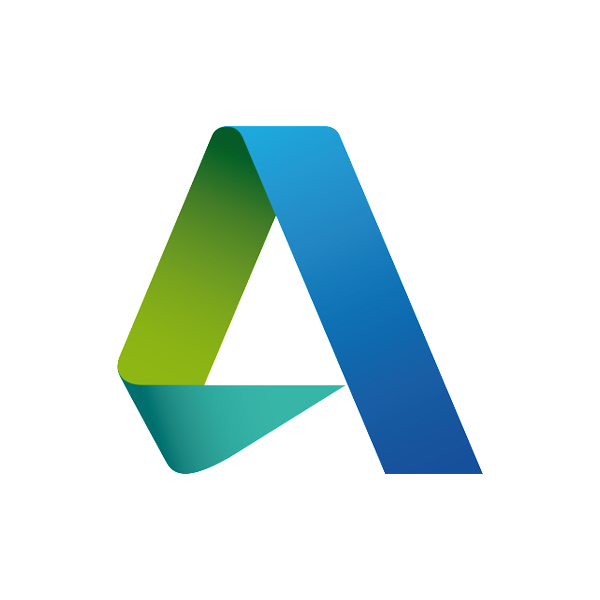The company kicks of new plans for infrastructure and manufacture and nurtures the growing AEC business.
Autodesk has been concentrating on bringing its user base into compliance and building new business via the transition to digitalization. The company’s revenues increased 12% year-over-year to $989 million. CEO Andrew Anagnost credited the company’s “resilient subscription business model.”
Autodesk CEO Andrew Anagnost says the company’s efforts to convert non-compliant users into paying customers resulted in Q1 license compliance billings almost doubling year-over-year.
Interestingly though, Anagnost also mentioned in the company’s call to investors that Autodesk saw a decline in multi-year subscriptions pointing to a sense of caution on the part of companies as they come back from the pandemic. Autodesk’s competitors have seen similar patterns. However, Autodesk is confident. “As the world rebuilds after the pandemic, Autodesk’s purpose—a better world designed and made for all—has never been more important and underpins our confidence this year and well into the future.”
The company is raising their revenue guidance for this fiscal year as they see some contribution from acquisitions. Further backing up their confident stance, Autodesk CFO Debbie Clifford says the company is repurchasing shares with excess cash to offset dilution from their equity plans. In the first quarter, Autodesk purchased 515,000 shares for $143 million at $277 per share.
Clifford is returning to Autodesk as CFO after a two-year absence. Previously, she had worked at Autodesk for 13 years leaving in the summer of 2019 to become CFO of Survey Monkey. She told investors that since her return she has been digging into the books and getting reacquainted with the company. She said, “while much at Autodesk is familiar to me, I’ve been pleasantly surprised by how much has changed for the better, reflecting the enormous progress Autodesk has made over the last two years. Autodesk has undergone a cultural revolution.”
Additional financial details
- Total billings increased 10% to $974 million.
- Total revenue was $989 million, an increase of 12% as reported, and 11% on a constant currency basis. Recurring revenue represents 98% of total.
- Design revenue was $885 million, an increase of 11% as reported, and 10% on a constant currency basis. On a sequential basis, Design revenue decreased 2% as reported and on a constant currency basis.
- Make revenue was $82 million, an increase of 21% as reported, and 20% on a constant currency basis. On a sequential basis, Make revenue remained flat as reported and on a constant currency basis.
- Subscription plan revenue was $948 million, an increase of 18% as reported, and 17% on a constant currency basis. On a sequential basis, subscription plan revenue remained flat as reported, and decreased 1% on a constant currency basis.
- Maintenance plan revenue was $19 million, a decrease of 69% as reported, and 68% on a constant currency basis. On a sequential basis, maintenance plan revenue decreased 37% as reported, and 36% on a constant currency basis.
- Net revenue retention rate was within the range of 100–110%.
- GAAP operating income was $134 million, compared to $131 million in the first quarter last year. GAAP operating margin was 14%, down 1 percentage point.
- Deferred revenue increased 11% to $3.35 billion. Unbilled deferred revenue was $889 million, an increase of $420 million compared to the first quarter of last year. Remaining performance obligations (RPO) increased 22% to $4.23 billion. Current RPO increased 22% to $2.86 billion.
- Cash flow from operating activities was $336 million, an increase of $9 million compared to the first quarter last year. Free cash flow was $316 million, an increase of $8 million compared to the first quarter last year.


Autodesk looks ahead
Autodesk is very optimistic about the coming year. Clifford noted that Autodesk’s typical financial year is back-loaded and the first quarter is often the lowest. Still, Autodesk execs are confident the coming year will be a good one on the basis of the receding pandemic. The company expects product subscription renewal rates to continue their upward trajectory and the company says it is forecasting full-year guidance to an increase of 19–22%.
Clifford says the year is “off to a good start,” and implied that guidance could go up as the year unfolds.
Andrew Anagnost outlined Autodesk’s strategy in its major markets: AEC, Infrastructure, and Manufacture.
In AEC, the company has been steadily building a cloud-based portfolio for the construction industry enabling collaboration for planning, design, preconstruction, construction, asset operations, and maintenance. Anagnost told investors that AEC represents a big opportunity. “It’s going to take a village to digitize this entire market,” he said.
In infrastructure, Autodesk has released Civil 3D, InfraWorks, AutoCAD Map 3D, AutoCAD Plant 3D, ReCap Pro. In his call with investors, Anagnost said for now the company is concentrating on infrastructure from the point of view of growing its organic products. So, they’re concentrating on bridges, roads, and rails and created workflows between Civil 3D and InfraWorks. He said, “we’ve been very happy with the progress we’ve been making there.” For the future, he said water and wastewater are definitely on the program. The acquisition of Innovyze makes that clear and Anagnost points to work Autodesk has been doing with Tandem and digital twins for waste management and water management but that work is in progress.
In manufacturing, Autodesk says they’ve made significant investments with the acquisition of Upchain and improvements made to Inventor 2022 including better interoperability with AutoCAD, Fusion 360, and Revit. Fusion 360 is growing for Autodesk and it’s enabling the company to bring design and make closer together in the cloud.
This was a very optimistic quarterly presentation, and while there are still plenty of worrying portents on the horizon as the pandemic takes another trip around the world, Autodesk’s confidence makes sense. The company did grow through 2020, which was a strange and challenging year.






